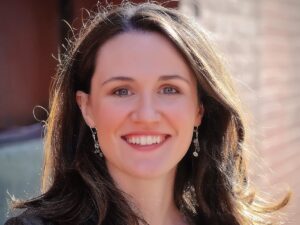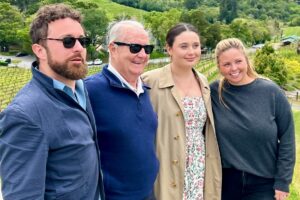Long before she got her nursing degree, or even her driver’s license, Yudith Vargas was logging hours at Santa Rosa Community Health.
“I started volunteering at 14, stuffing letters, numbering charts — essentially, anything that needed to be done.”
Fast forward to 2020, and Vargas is back at SRCH, the health provider for some 50,000 uninsured and underinsured Santa Rosa residents, as the clinic’s associate director of nursing. When the pandemic hit, she pivoted from an administrative role to the front lines, running a Covid testing site and doing outreach.
Vargas and her colleagues soon noticed two disturbing trends: cases in Sonoma County were skyrocketing, and the Latinx community was hit hard, accounting for 75% of cases, despite comprising only about 27% of the population. “As we started seeing those community numbers, and ourselves reflected in them, that really had an impact on us,” Vargas says.
In the excerpts below, read some of Yudith Vargas thoughts on the Covid-19 situation in Sonoma County.
One thing after another
We’re definitely seeing our community struggling with the social determinants of health: financial stability, housing stability. When you look at somebody who may be new to this country, they’re forced, because of the high cost of living, into larger households. Also, our Latinx population sometimes doesn’t have the same benefits, whether because they’re working undocumented, or they have employers who don’t follow the law to provide sick leave. And if you’re diagnosed with Covid, you’re literally in isolation. So what incentive is there for people to stay home, with these things working against them? They’re isolated from those they love, losing income, and they might not know what they’re gonna eat the next day. It just feels like one thing after another, playing against our Latinx population.
The roots of medicine
We’re trying to get back to the roots of medicine: asking the community what they need and getting out there to reconnect and influence our comrades. Providing education to community leaders, so they can get the word out as well. The bottom line is, let’s focus on everyone wearing a mask when they’re in public. If they going to see somebody, everybody wears a mask, right? Having a risk-reduction approach. A parallel is STIs. When you tell somebody, ‘no, don’t have sex,’ we’ve seen the effects of that. What’s the risk reduction? Wear your mask. Like, wear a condom.
In it together
My dad is an essential worker, so I’ve been trying to support him and check on my family to see what they need. My partner is also a healthcare worker, so we’re in it together, literally. Still, it’s scary. One self-care thing I do is hike every weekend. Sometimes my partner comes, sometimes it’s just me and my fur child, Frosty. It helps me clear my mind. You know, turn the cell phones off, whatever I need to do to get out there and put some space between me and everything that’s going on.
Feeding resilience
During the Tubbs fire, we lost our Vista Campus, this beautiful two-story campus which served about 25,000 of our patients. We had a little playground out front, and we think some material in it shot up flames and the roof of the building caught on fire. That set off the sprinklers, which flooded the whole campus. I’ve been through that, the Kincade fire, and now this. The thing that continues to feed my resilience is our patients and our community. I come from very humble beginnings, and so do my immediate family members. I just don’t see myself doing any different work, because of the constant reminder of how important it is to do what we’re doing — to serve those who are most vulnerable during these times.











